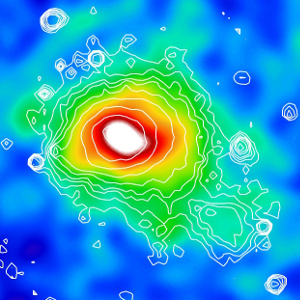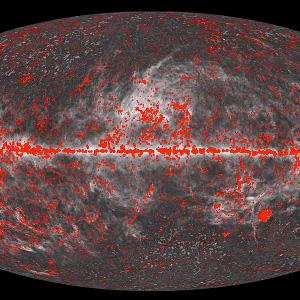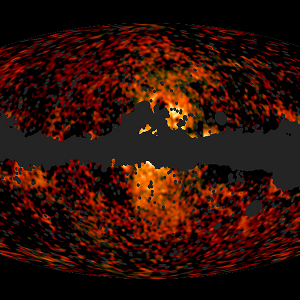Between the initial release of results in January 2011, and the release of the first full-sky maps planned for early 2013, the Planck Collaboration has produced a number of intermediate science results. These results primarily involve the investigation of diffuse emission from our own Galaxy, and the study of other galaxies and clusters of galaxies.
Click here for more detailed information on the individual scientific papers.
Galaxy Clusters

Many of the Planck initial results involve the study of clusters of galaxies. The clusters contain huge amounts of very hot gas, and as the light from the cosmic microwave background passes through the gas on its way to Earth it is energised – an effect known as the Sunyaev-Zel’dovich effect. This allows massive galaxy clusters, such as the Coma Cluster seen on the left, to be detected at huge distances across the Universe.
Results using Planck and XMM-Newton measurements have shown that galaxy clusters come in all sorts of shapes and sizes, and that common assumptions may not be valid. Planck measurements have shown that galaxy clusters come in all sorts of shapes and sizes, and discovered the first ever seen triple-system of galaxy clusters. Overall, 51 clusters were detected by Planck and confirmed by Planck, in a number of scientific papers. See a full list of Planck intermediate results papers here.
Distant Galaxies

Planck released the Early Release Compact Source Catalogue in January 2011; further investigation has examined the sources that are brightest at higher frequencies (above 100GHz) The sources have been classified into galaxies dominated by thermal emission from dust, and those dominated by synchrotron emission from electrons in magnetic fields. The results provide more information on the general populations of these two types of sources:
Galactic Haze

Using precise full-sky observations from Planck, and subtracting the emission from known sources, Planck has identified and characterised the emission from the “Galactic Haze” at microwave wavelengths. The haze is a distinct but mysterious component of diffuse Galactic emission, the origin of which is unknown. It is roughly centered on the Galactic centre, and also seems to lie in the same place as gamma ray “bubbles” detected by NASA’s Fermi satellite. By combining the Planck data with observations from NASA’s WMAP satellite astronomers suspect that the haze is due to emission from unusually high energy electrons moving through the Galaxy’s magnetic field. The haze can’t be accounted for by previously know sources, and a new mechanism for cosmic-ray acceleration in the centre of our Galaxy is implied.